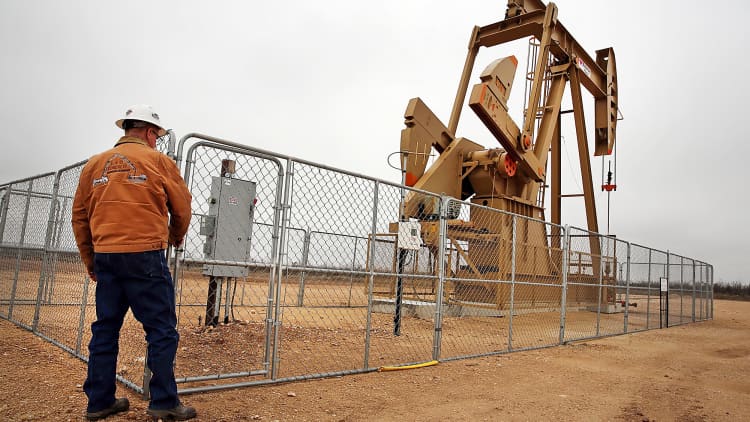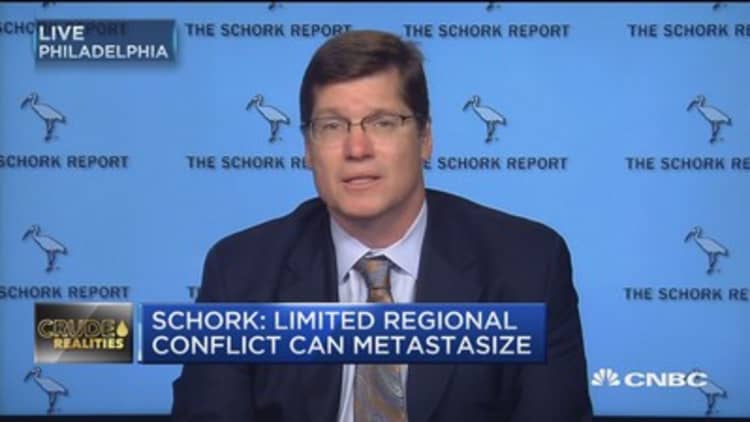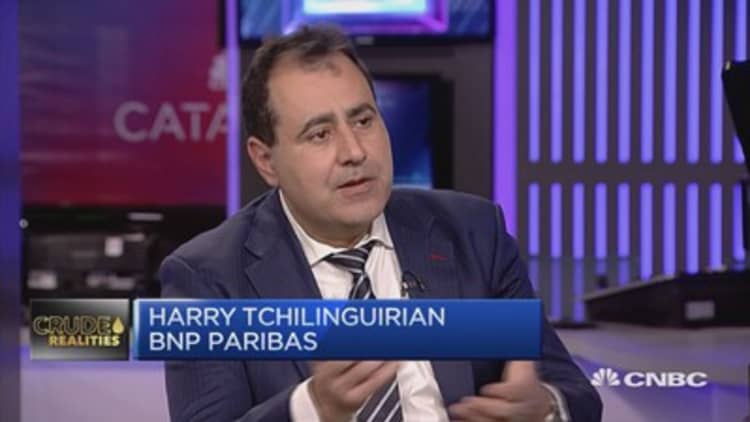
Geopolitical tensions could be a double-edged sword for oil prices and threaten the complicated alliance among the world's biggest producers.
The oil market is closely eyeing the Syrian situation, where a U.S. attack last week increased tensions between the U.S. and
But the Syria situation could make that more difficult, particularly if the Trump administration becomes more interventionalist, aggravating the proxy conflict in the region.
"For the geopolitical situation you could bend bearish or bullish," said Michael Cohen, head of energy commodities research at Barclays. Heightened conflict in a neighborhood where 20 million to 25 million barrels a day of oil are produced could just simply put upward pressure on prices, he said.
On the other hand, the tensions could end up creating a split among key producers who for now are holding together their production agreement. "When you have Iran and Saudi Arabia now in even further conflict, and also Iran and Russia in alignment on one side of the U.S. and Saudis, and Russia not seeing eye to eye on Syria, it complicates the ability of those OPEC ministers and Russia to have an amicable outcome," he said. "That could be bearish."

Saudi Arabia is the world's biggest oil exporter and it has taken on the lion share of the cuts. But he said Russia is the wild
OPEC producers meet May 25 and could decide then to extend the deal to cut 1.8 million barrels a day, which started in January. Cohen said it's possible they could shorten the time frame of the extension or change the amount of oil that is being taken out of production.
"You have to question whether the Syrian situation has now become a proxy that divides them more than the low oil prices united them. So that's a big deal here," said John Kilduff of Again Capital.
On Tuesday, Dow Jones quoted sources saying that Saudi Arabia wants to extend the now six-month deal to cut production. Oil was temporarily higher on the report. Meanwhile, Reuters reported that OPEC members reduced output more than they promised in March, with 104 percent compliance.
This contrasts with comments just a month ago, when Saudi Arabia warned other producers to keep their commitments on compliance and said it was too soon to agree to an extension of the production deal.
"Now you're kind of placing a wedge between the key players because of this [U.S.] policy. The question is whether oil policy can be separate from economic or national security policy. I think it aligns in some places and it's a concern in other places. In
"What really matters are three people – [Iranian President Hassan]
Cohen said another issue is what role U.S. shale will play. "They see rig count increase in the United States and forecasts by a bunch of tight oil producers that production should be higher ... so at some point the question of whether they continue this is going to hinge on whether OPEC wants to continue
"OPEC wants to rip off the Band-Aid as soon as
He said OPEC will extend the deal, especially if market fundamentals weaken ahead of its decision, as he believes.
"We're still of the view that we're going to see a sharp price rally at some point occur in this quarter, and we believe inventories continue to be drawn down."
Kilduff said he believes OPEC's high compliance will be the result of Saudi Arabia cutting more than required. "The real test is going to come as we get to these warmer months and do the Saudis ramp up production to meet their internal demand. On the surface, it will look like Saudi production is spiking. These are the easy days to comply with the deal. But the hard days are coming," he said.
Important for the market Wednesday will be U.S. Energy Information Administration inventory data, released Wednesday at 10:30 a.m.
Kilduff said the IEA report will be helpful when looking at global inventories, which seem to be falling.
Markets have also been watching North Korea, as the U.S. moves warships into the area.
"Any move on Korea will be seen as the market as bearish because it's going to impact market activity and mean in Asia," said
"We're seeing encouraging inventory reports. They've been building much less," said Ryan McKay, commodities strategist at TD Securities.
Cohen expects Brent crude futures to trade at $58 per barrel in the second quarter, but he also expects the international benchmark to dip in the mid $50s in the third quarter before rising in the fourth quarter. West Texas Intermediate crude futures should be about $2 lower.
Watch: Oil market focused on production cuts



